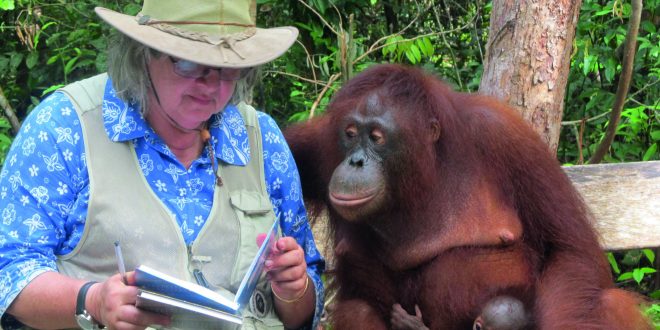Editor’s prologue:
Lithuanian Heritage published an article by Tom Gregg about celebrated Canadian/ American-Lithuanian anthropologist Dr. Birutė Mary Galdikas in the November/December 1998 issue. In preparation for this follow-up interview, I extracted that article and put it on our website in the open access area: www.draugas.org/extracts/bgaldikas.pdf. We also viewed the 2011 film about elephant and orangutan rescue, titled Born to be Wild, directed by David Lickley and narrated by Morgan Freeman, which touchingly documents the efforts of the Orangutan Foundation International (www.orangutan.org) to nurture orphan orangutans and prepare them for reintroduction to their native habitat. The movie can be viewed on Amazon Prime after paying a nominal rental charge of $2.99.
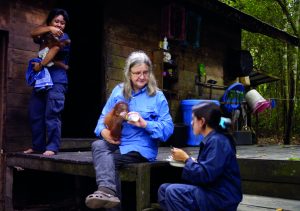
I thought about Birutė’s work while attending a scientific meeting in Kuala Lumpur, Malaysia a few years ago. Although our downtown hotel was directly across the street from the iconic Petronas Towers, one could not see them from the 21st story hotel windows due to the thick smoke and smog that had engulfed the city, and which persisted for the duration of the 3-day conference. The explanation for the smoke was, that there were fires on the nearby islands, especially, Borneo. I was told that it was cheaper to burn the tropical rainforest to prepare it for palm oil planting, than to clear cut the forest by mechanical means. Apparently there were severe legal penalties for burning forests in this manner, but powerful interests routinely circumvented these regulations. It was astounding to me that this was allowed; due to the intense smoke, the conference attendees were essentially hotel-bound, and none could exit the hotel to explore the surrounding neighborhood.
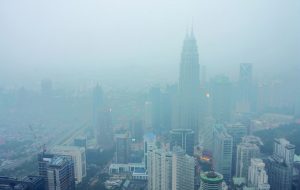
Dr. Galdikas has been fighting to save the orangutans of Borneo and Indonesia for the past 50 years. In 1971, aided by grant support from noted Kenyan anthropologist Louis Leakey, she traveled to what is now the Tanjung Puting National Park area, and set up camp to study orangutans in their natural habitat. Four years later, she described her work in a cover story in National Geographic magazine. At the Orangutan Foundation International Canada website, the importance of her work is summarized:
“Galdikas was the first to document the long orangutan birth interval which averaged 7.7 years at Tanjung Puting. She recorded over 400 types of food consumed by orangutans, providing unprecedented detail about orangutan ecology. She also helped elucidate the nature of orangutan social organization and mating systems. She observed flanged adult males in combat, consortships, and even wild orangutans giving birth. It was the most complete record of wild orangutan behavior ever recorded. In 1978 she received her PhD in biological anthropology from UCLA. After 40 years in Tanjung Puting, now a national park, Galdikas has conducted the longest continuous study by one principal investigator of any wild mammal in the world.”
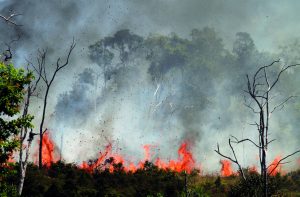
“Galdikas was also concerned with the conservation situation from the very beginning. A week after arrival she set up the first orangutan rehabilitation and release program in Kalimantan. Although the first release site was at Camp Leakey, over the years the program expanded to multiple sites and ultimately led to the release of over 450 wild born ex-captive orangutans into the wild. Since the 1990’s the program is housed at the Orangutan Care Center and Quarantine where currently 330 ex-captive orangutans reside.”
The forecast for orangutan survival in Borneo (which is right next to Malaysia) and surrounding countries is not particularly encouraging, despite the best efforts of the Orangutan Foundation International and like-minded supporters. A recent (2018) survey published in the journal Current Biology (Voigt M. et al, 2018; 5:761-769) found that between 1999 and 2015, the orangutan population of Borneo declined by more than 100,000 (by almost half). The decrease was due to habitat destruction related to palm oil production, but also occurred in forested areas, where it is thought to be due to hunting. Another piece of grim news was the announcement in 2019 that the capital of Borneo, currently located at the waterlogged coastal city of Jakarta, would be moved to the sparsely populated Kalimantan area on the island of Borneo, home to some of the world’s greatest tropical rainforests.
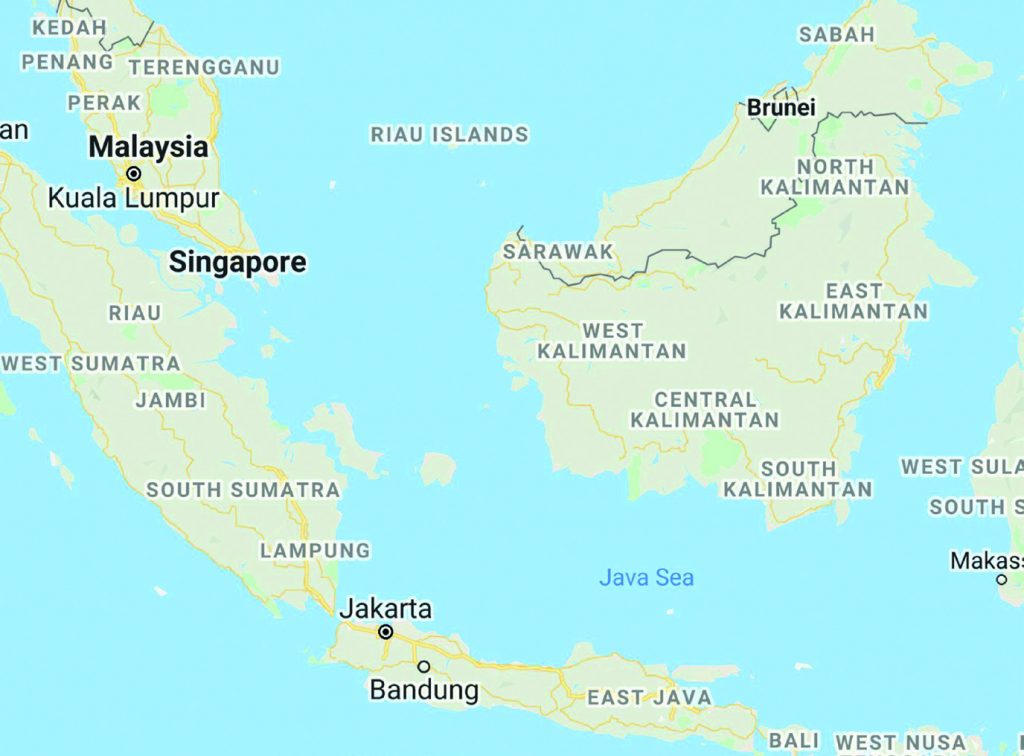
Some facts about palm oil:
Although there are a number of reasons leading to tropical rainforest habitat destruction, one of the most important is the world-wide obsession with health and the increasing use of palm oil. The highly saturated nature of palm oil renders it solid at room temperature. This is highly desirable for many foods, especially baked goods. Currently, palm oil is found in almost all cookies, for example. Palm oil has turned out to be a useful substitute for hydrogenated vegetable oils, as the latter have been linked to cardiovascular disease.
So, with that as background, we begin our interview with Dr. Birutė Mary Galdikas:
LH: Birutė, just to review your family history: Your parents, Antanas and Filomena, left Lithuania during World War II and spent some time in a displaced persons’ camp in Germany where you were born. Your family initially settled in Québec, but after a year moved to Toronto, where you spent your childhood along with your 3 siblings – a younger sister and two younger brothers. What path led you from Toronto to California and UCLA to study anthropology?
BG: My grandparents had actually immigrated to the United States and lived there in the early twentieth century. They returned to Lithuania after the First World War. My parents, who, as you note above, immigrated to Canada after World War II, had a strong desire to move to the United States and re-connect with my aunt, my mother’s sister, who had been born in the USA and at the time lived in Los Angeles. After five years of waiting, my parents received their visa to immigrate to the United States.
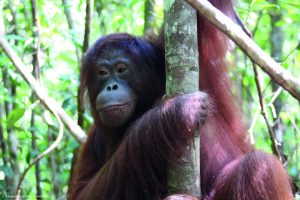
We immediately moved to Los Angeles. I was a teenager at the time. After having spent one year at the University of British Columbia in Vancouver, BC, I enrolled in UCLA, where I completed my B.A. in psychology and zoology, and obtained a Masters and PhD degrees in anthropology. UCLA was a world class institution and I took a diversity of courses and encountered many inspiring people there, including Dr. Marija Gimbutas, who was a professor.
Even as a small child, I had been fascinated by human history and prehistory. I had seen a picture of a subadult male orangutan in a book, which had focused my interest on orangutans. I still have a strong memory of that particular picture. The orangutan looked so much like a human that it was startling. In a sense my life with orangutans began in Los Angeles at UCLA because that is where I met Louis Leakey, who was a world famous paleoanthropologist and a giant in the study of human evolution. Dr. Leakey was a friend and colleague of one of my professors. He had supported Jane Goodall in her study of chimpanzees and Dian Fossey in her study of mountain gorillas. So, when I learned about this “young woman who lived with chimpanzees” (Jane Goodall) I knew my fate was to be the one who lived with orangutans. After a guest lecture by Dr. Leakey, I waited until the crowd around him had thinned and asked for his help in getting a study of orangutan behavior underway. It’s a long story but, after three years of meetings, letter-writing, and waiting, Dr. Leakey found the funding and support I needed to go to Indonesia and begin my orangutan work which has continued to this day.
LH: In the movie, Born to be Wild, you were shown conversing with the local populace in the Dayak language. Was it hard for you to learn the languages spoken in Indonesia? What can you say about the culture of the native people there?
BG: First, I was not speaking the “Dayak” language in the movie but rather Indonesian. There are dozens of Dayak languages and dialects and I don’t speak any of them except for a few words. I speak Indonesian. Indonesian is a “lingua franca” which means that it is widely spoken. Part of the reason, but not the only one, is that, like English and Swahili, it is relatively easy to learn as the grammar is not particularly complex. They say you can speak passable English with a vocabulary of 500 words because you don’t have to decline or conjugate words. It is always hard to learn a new language but certainly I learned Indonesian, mainly by osmosis, and speak it relatively well.
Indonesian culture has deep Hindu-Buddhist roots and it emphasizes serenity and harmony and even, to a certain extent, tolerance and conflict avoidance. Those values were particularly evident when I arrived in Indonesia 50 years ago. Indonesia is also one of those traditional societies where one follows the rules of courteous and predictable behavior. Although I sometimes found Indonesian culture, on occasion, a bit perplexing, I very much liked the culture and the warm, gracious, smiling people of Indonesia.
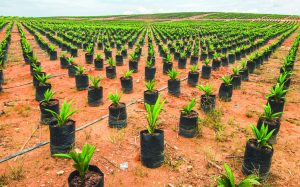
LH: Does the Lithuanian language still strike a chord in you? What aspects of Lithuanian culture or upbringing do you find still affects you? I notice that you list your name in your academic credentials and most other places as Birutė with the dotted “e” or the French “accent aigu” (é). This is somewhat unusual for American or Canadian Lithuanians. Any comment?
BG: My parents were both very strongly Lithuanian as they immigrated to North America, first Canada and then the United States, as adults with their many experiences of fleeing war and the invasion of their native country. They spoke Lithuanian at home and to us as children. I went to Lithuanian Saturday school until I graduated which was in grade 10. In Toronto and Los Angeles, they participated heavily in Lithuanian-Canadian and Lithuanian-American associations and community activities. I have always been proud of my Lithuanian (and also Baltic) heritage. During my first year at UCLA I rode in a carpool with several students who were of Lithuanian heritage and ate lunch with them almost every day.
I first visited Lithuania briefly when I was in my 50’s and have been back numerous times since. A bank there established the “Birutė Galdikas Ecology and Support Foundation,” but unfortunately, the bank subsequently went bankrupt. On several occasions, Lithuanians in Lithuania, especially younger people, have been surprised that I know so much about Lithuanian history and have told me that I know more than they do. Incidentally, I also speak Lithuanian. Of course, in Indonesia there is no reason to speak Lithuanian so I have lost much vocabulary and grammar during my 50 years there.
The biggest evidence of my Lithuanian (and also, Baltic) heritage is found in my love of nature. A strong influence on my life was my Estonian best friend, Mare Tiido, and her family who were nature fanatics (a very good thing!) and who very much inspired in me a deep appreciation of nature. My family also loved nature and spent as much time as they could in the wilderness. After my parents bought their first car, almost every summer and fall weekend we would go up to the cottage country near Georgian Bay, part of Lake Huron. They sent me to Lithuanian summer camp where we youngsters stayed in tents and listened all night long to the whine of mosquitoes in the northern Ontario pine woods. My father, Antanas Galdikas, went to church regularly but seemed more inspired by Perkūnas and the old Lithuanian gods of nature. He said he wanted to be buried in his old Cadillac just like ancient Lithuanians were buried in their chariots. (Joke or no joke, I can’t really say. They say there is always a kernel of truth in any joke).
My father had a deep love for animals and was very devoted to his dogs, of which he had many over his lifetime. He also fed the birds in our back yard. I remember wild jays perching on his outstretched hand as he fed them bits of food. I am sure that my love of animals was very much in influenced by his example.
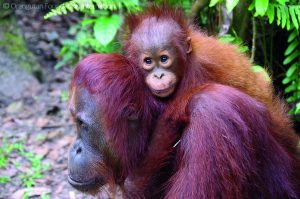
When I was a child, my mother Filomena would take me and my siblings for walks in High Park where she would show us trees and plants, leaves of which she collected to brew teas and for medicinal uses. She instilled in me a deep and profound respect for nature which I carry in my heart today.
Lithuanians today have one of the highest literacy rates in the world, so it is not surprising that my parents highly valued education. My mother would not allow me to help her with the housework while I was in high school saying that it was better for me to study. Only when I entered college did she relent on this issue. So, in general, I would say that Lithuanian and Baltic values very much played a role in my development as I grew to adulthood and sought my place in the world.
As to the é at the end of my first name, it was placed there to denote that the “e” was not silent but voiced. Otherwise English speakers would simply say “Birut” and not pronounce the “e”.
LH: Have you ever thought about environmental issues in Lithuania? One of Lithuania’s Past Presidents, Valdas Adamkus, was, of course, Director of the Midwest Regional Environmental Protection Agency. This past year there were some demonstrations in Lithuania where the demonstrators were worried about relaxation of logging restrictions in one of the old-growth forest regions there.
BG: I didn’t know about the demonstrations in Lithuania where people were worried about the relaxation of logging restrictions. But I do remember that some of the very first mass demonstrations against Soviet rule were in Estonia. These early protests, which also occurred in the other Baltic states and ultimately led to independence, were protests against environmental degradation and pollution. Lithuanians and Balts in general seem to have a special regard for, and possibly even a special relationship with, nature, so the demonstrations in Lithuania against logging in an old-growth forest do not surprise me. However, Lithuanian attitudes to animals are not as advanced as they could be. For example, farmers have complained when European bison enter their gardens; as a result, bison are corralled and not rehabilitated to an actual life in the wild. Also, only within the last decade has the hunting of wolves been banned in Lithuania’s national parks and apparently, it’s open season on these socially complex animals else-where. Given the tiny number of wild wolves and bison that remain in Lithuania, Lithuanians could do themselves proud by protecting these charismatic symbols of the wilderness in their country.
LH: Over the years, I’m sure that you established strong emotional bonds with a number of the orangutan orphans that you saved. Would you like to share a story in this regard?
BG: I have established deep bonds with many orangutans, a few of which I raised. The local staff say that when I come back to Camp Leakey, often orangutans appear that the staff have not seen in a while. They often come to my house at Camp Leakey to visit me. Sometimes they just come and sit, satisfied that I am there with them.
How deep is the bond? Several times adult male orangutans have run past me to attack other people. In one case, an orangutan we had just released to the wild, rather than going up into the adjacent trees, leaped off the wooden platform once the door to his transport case was opened. The orangutan stared at me as he charged but there was no hostility in his eyes. I moved back a step as he came towards me and I stumbled, falling to the ground on my back. As I lay there, he ran by me so closely that the hair of his left foot brushed against my left cheek. The hair felt delicate and light, barely grazing my face. He could have easily stepped on my face or attacked me but he didn’t. He continued charging, but most of the people at the release site ran away as fast as they could while a few others took a large branch and tried, ultimately successfully, to scare him away.
LH: Dr. Jane Goodall, who researched chimpanzees, Dr. Dian Fossey, who investigated mountain gorillas, and you were all inspired by anthropologist Louis Leakey. Did the three of you ever get together and compare notes? Were you close to either one of your colleagues? (Note: Dr. Fossey was murdered in 1985 – by gorilla poachers?)
BG: First, it is not known if Dr. Fossey was murdered by gorilla poachers. There is reason to believe that she was actually murdered by an American graduate student who was found guilty of her murder by a Rwandan court. Apparently, Dr. Fossey would not share her data with him.
Jane, Dian, and I gave at least 2 talks together in the United States. Over the years before Dian’s death in 1985 the three of us had ample time and opportunity to talk. I stayed in Dian’s apartment in Ithaca, New York for some days where she was teaching and the three of us were together for about a week at a Wenner-Gren conference in an isolated castle in Austria. Dian and I met at other times as well when she visited Los Angeles. I also arranged for Dian to give a talk at Simon Fraser University where I am a professor. Dian and I were together in Seattle giving talks. I also met Dian when she repeatedly visited while I was staying in Dr. Goodall’s mother’s at in London with Louis Leakey, Jane, then husband Hugo, and son Grub.
As for Dr. Goodall, I can’t keep track of how many times I have interacted with her. I spent a week at Jane’s camp in Gombe, Tanzania, and have met her numerous times in different cities under various circumstances. Dr. Goodall came to Indonesia to attend a Great Ape conference at the end of 1991 which my organization, Orangutan Foundation International (OFI), organized. The conference was opened by then President Soeharto in Jakarta before the conference participants flew to Pangkalanbun, Kalimantan where the conference continued for some days. Jane has also written several introductions to my books.
I would characterize our relationship as that of “sisters.” In fact, I think Jane once referred to me as such in a book introduction she wrote. We have been called the “Trimates” and “Leakey’s Angels.”
LH: Ecosystem destruction seems to be relentless, especially in developing countries where there are marked economic benefits associated with farming and repurposing of land for development. How can this be mitigated? Who is supporting your Orangutan Foundation International financially? Is there a growing ‘green’ movement in Indonesia? Is there anything that concerned people in the United States and Canada can do to help?
BG: Young Indonesians are increasingly aware of environmental issues, even as the government has indicated that economic development will take precedence, most of the time, over all else. There is a nascent green movement in Indonesia and a growing awareness of environmental problems but it still does not have much power to implement deep change.
Humans have a tendency to avoid the unavoidable by not acknowledging it and simply refusing to admit it exists. Individuals can change the course of history; they can also help change the ecological destruction prevalent throughout the developing world and help mitigate climate change. In fact, it begins with the individual. If you wish to help orangutans and other wildlife in Borneo’s rainforests, then start with something simple like meticulously recycling paper. Tropical forests are still being cut down for pulp and paper and to establish timber estates which are wastelands for animals. Temperate forests cannot compete in terms of growth rates and thus, more and more pulp and paper come from the tropics and more and more native tropical forests are being cut down to establish timber estates by planting monocultures of non-native trees.
Second, read labels and avoid products with palm oil. Much deforestation in Borneo has occurred because of the expansion of vast palm oil plantations. Palm oil and its derivatives come under many different names. You can easily find these different names on the internet. Palm oil is difficult to avoid in consumer products. It is ubiquitous in baked goods, cooking oil, chocolate bars and candy, and even fortified milk, toothpaste, detergents, cosmetics etc. Fifty percent of processed goods in supermarkets may contain palm oil. If you can’t avoid palm oil, please use less of it. At this point in time, so-called “sustainable” palm oil barely exists and is extremely hard to find.
Third, please donate to Orangutan Foundation International (OFI) which is a tax-deductible 501(c)(3) public charity. We are based in Los Angeles but we also have small sister organizations in Canada and Australia. Most of our funding comes from the general public in the United States.
Consume less, recycle more, and try to put officials into office who do not just prioritize economic issues but also care for the welfare of people, ecosystems, and animals. I have said nothing so far that has not been said a hundred times before. But before the planet can be “saved,” the biggest change will have to occur within ourselves and our own spiritual aspirations. We will all need to be more aware of what is happening around us and within us; we will all need to be more compassionate and altruistic. The crisis is upon us. We only have ourselves to blame and only ourselves to protect the air we breathe, the water we drink, and the earth we live on, and to defend ourselves from the ecological disasters and disruptions that will, sooner or later, change everything.
The new “normal” is descending with its droughts, massive fires, floods, hurricanes, extinction of species, crop failures and who knows what else. Eventually all will change if we don’t stop the change. That is what I have been trying to do: stop the change, maintain hope, plant trees, stop the fires, educate the young, influence the ones in power, and try to save orangutans from extinction. For the last 50 years, I have been saying that “if we save orangutans, we save ourselves.”
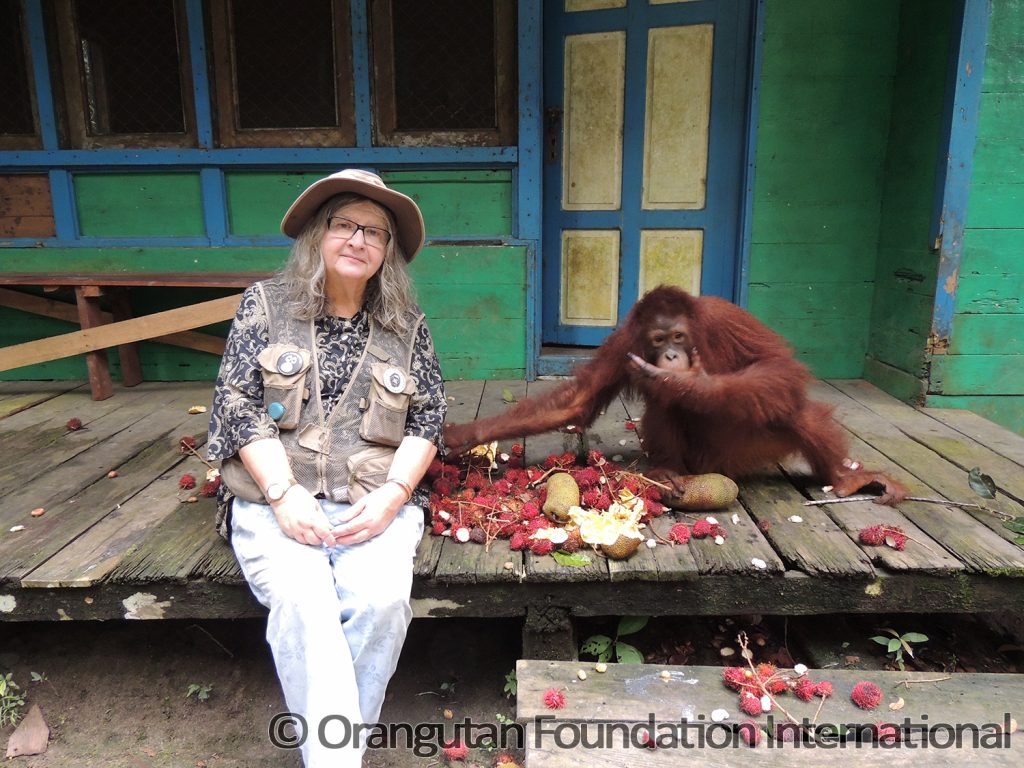
 DRAUGAS NEWS Lithuanian World Wide News in English
DRAUGAS NEWS Lithuanian World Wide News in English
